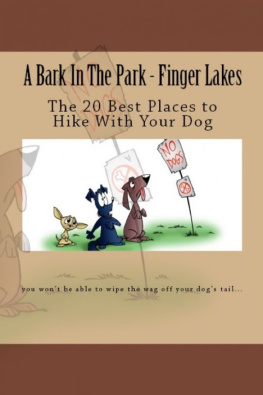Copyright 2015 by Sarah Marcus. All rights reserved worldwide. No part of this publication may be replicated, redistributed, or given away in any form without the prior written consent of the author/publisher or the terms relayed to you herein.
Kindred Souls Press
Las Vegas, NV 89104
Copyright Notice
This publication is designed to provide accurate and authoritative information in regard to the subject matter covered. It is sold with the understanding that the publisher is not engaged in rendering legal, accounting or other professional services. If legal advice or other professional assistance is required, the services of a competent professional person should be sought.
- From a Declaration of Principles jointly adopted by a Committee of the American Bar Association and a Committee of Publishers and Associations.
All rights reserved. No part of this publication may be reproduced or transmitted in any form or by any means, electronic or mechanical, including photocopy, recording, or any information storage or retrieval system, without permission in writing from the publisher.
No responsibility or liability is assumed by the Publisher for any injury, damage or financial loss sustained to persons or property from the use of this information, personal or otherwise, either directly or indirectly. While every effort has been made to ensure reliability and accuracy of the information within, all liability, negligence or otherwise, from any use, misuse or abuse of the operation of any methods, strategies, instructions or ideas contained in the material herein, is the sole responsibility of the reader.
Any copyrights not held by publisher are owned by their respective authors.
All information is generalized, presented for informational purposes only and presented "as is" without warranty or guarantee of any kind.
All trademarks and brands referred to in this book are for illustrative purposes only, are the property of their respective owners and not affiliated with this publication in any way. Any trademarks are being used without permission, and the publication of the trademark is not authorized by, associated with or sponsored by the trademark owner.
Table of Contents
Somewhere around 1978 the technology to transmit data over phone lines became available to the average computer user. Up until that time it had pretty much been only the geeks at the colleges and the military were capable of data transmission.
And it wasn't long until after that that software was developed which allowed a person with a modem (short for modulator/demodulator) to dial up another modem where software was set up that allowed people to leave messages and talk about computing.
There were several companies that had developed a bulletin board software and computer heads were eager to connect to these bulletin board systems.
There were a few problems with this system. One of them being only one person at a time could access the bulletin board system and that made for a lot of busy signals which made for a lot of frustration when trying to access your favorite BBS.
As they gained popularity and more and more bulletin board systems came online if one was busy users will go to another one. Someone soon figured out that programs could be transferred over the phone lines and soon files were being swapped between system operators known as sysops and users on the board. The major drawback was modems could only send or receive data at about 1200 or in some cases 2400 baud a very slow transmission rate. In an attempt overcome this often time file downloads or uploads were started late in the night time and allowed to run all night. The problem with this is often times the connection would be lost or some features such as call waiting would knock the user off-line. If a file was only partially downloaded when the connection was lost the file would have to be restarted from the beginning which could be not only frustrating, but time consuming.
It was only a little while later that 2 things occurred which would change the face of bulletin boards. Up until then Hayes modems were pretty much the standard with only a few challengers.
That all changed with the introduction of the US Robotics Courier HST Dual Standard. At 9600 baud the Courier was not only many times faster than the Hayes but could send data both ways simultaneously plus as an added bonus US Robotics allowed verified bulletin board operators to purchase the Courier from US Robotics at a deep discount. The Courier was eventually made to run bulletin board systems at 33.6 baud.
US Robotics later attained a rate of 56 baud, but by then the Internet and blazingly fast Internet speeds by cable modems had pretty much killed the dial-up market in marketing and of bulletin board systems. Also about that time BBS software had been developed to the point that dropped downloads could be picked right back up at the point at which connection was lost. It wasn't long until users started uploading and downloading files from the sites and in no time at all pirated files were being uploaded and downloaded.
Soon Pirate sites began popping up with names like The Sponge, Nocturnal Dreams, Street Spyders, and Cycle sluts from Hell. Initially there were no download limits but sysops got tired of the constant file leaching and soon imposed restrictions. Most boards required that you upload a file to get a file. Some of the more liberal boards only required you to upload one file so you could download two files. Since you were usually getting the latest games and apps it was required that you upload a file of quality or you would soon find yourself banned from that particular board.
As modem speeds increased users with the slower 1200/2400 baud modems found themselves "locked out" of BBS`s who began favoring users with faster modems.
In order to expedite the uploading and downloading of files, files were compressed into a format called PKZIP. When a file is "zipped" at the end of the file is a single byte known as the least significant byte. This bite has no function but rather acts of a space at the end of a file and has no bearing on the compressed contents of the file.
A computer science student wrote a small program that would detect when a zipped file had reached the least significant byte and would abort the download. This accomplished two things.
First even though the file had been aborted it would still unzip perfectly fine.
Second and this was the best part was that since the file had aborted the user was not charged for a download thereby keeping his racial intact the matter how much he downloaded.
Many pirated applications and games were sent across the phone lines in those early days. But all that was about to change.
In 1989 America On Line began its meteoric rise quickly overtaking services like prodigy and CompuServe. For most people AOL was perfect. They had never seen a site that would do so much, but for people who had been active on the bulletin boards that felt like something was missing.
Luckily AOL offered as one of their services the ability for you to "step out" of AOL and get on Internet relay chat (IRC). This was probably a big mistake for AOL because to the delight of many users they found that preferred IRC to being on AOL and it probably costs AOL quite a few users. And went through AOL's portal no software was required.
If you wanted to go there without going through AOL you needed a software much like mIrc or pirch.
With over 200 different networks and each network having numerous "rooms" and in addition to host servers all around the world even in Budapest. IRC was the largest underground or unadvertised network in the world.
Initially IRC was much like the bulletin board systems that proceeded it. It started out with chat boards, some trivia games, but it wasn't long before apps and games files were being swapped.
Next page









